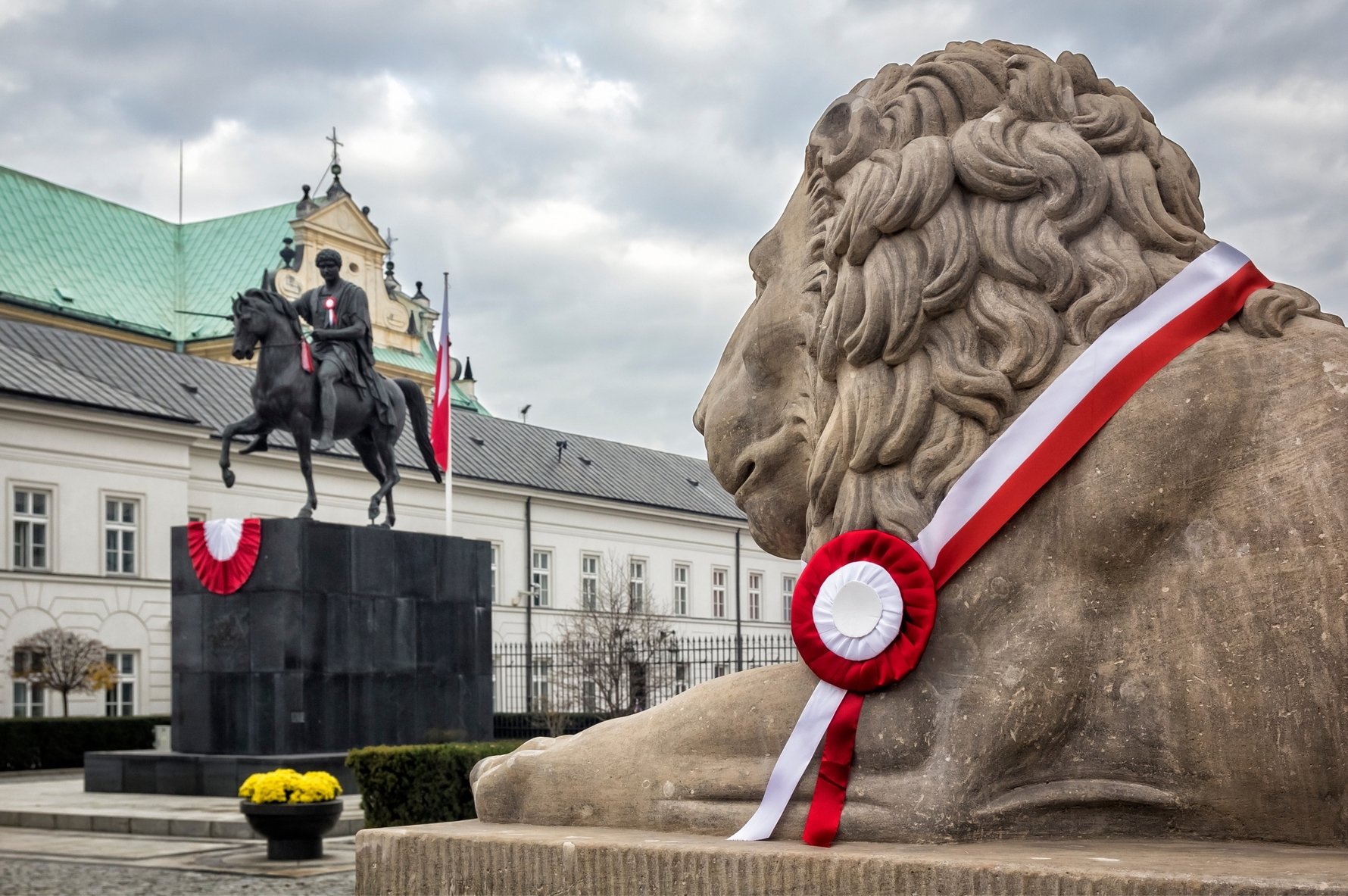The month of Listopad takes its name from a combination of two old Slavic words, which in Modern Polish, can be understood as liść (ENG: leaf) and padać (the verb meaning 'to fall').
And as can be seen all around you in Poland, we are now in the thick of Autumn. And for many, this is the most spectacular time of the year! With a chill in the air and a vibrant surround of brilliantly-coloured leaves, Listopad is at the heart of what is known as Złota Polska Jesień (ENG: Golden Polish Autumn). For all the ladies out there who enjoy a golden walk in the park, or even curling up with a book and a mug of pumpkin-spiced latté... Guess what? There is a word for people like you: Jesieniary. There's a term for the autumn lads as well: Jesieniarze.

In grand contrast to Październik (ENG: October), Listopad is quite a happening month. Things kick off immediately with
Dzień Wszystkich Świętych (ENG: All Saints' Day) on the first of the month, a public holiday, where families and friends visit the graves of deceased loved ones and light a candle in memorium. This practice is actually meant for the following day, Dzień Zaduszny (ENG: All Souls' Day) though because it's not a public holiday, the earlier date is taken advantage of instead.
Up next in Listopad is one of Poland's most important celebrations and public holidays. In many countries, November 11th is Armistice Day, commemorating the end of World War One. This also marked the end of 123 years of Poland being occupied by neighbouring powers. For this reason, the 11th day of Listopad is Polish Independence Day, and, depending on your political persuasion, is celebrated in different ways across the country.

The 11th day of Listopad is also Dzień Świętego Marcina (ENG: St Martin's Day) who is also the patron saint of the city of Poznań. In pre-Christian times, harvest celebrations involved the production of rolled dough in the shape of ox horns. Later, the Catholic Church chose to reinterpret the horned bread as the horseshoe of St Martin's trusted mount. This has since evolved into a uniquely Poznanian specialty: Rogal Świętomarciński (ENG: St Martin's Croissant) which has a white poppy seed filling and is iced with nuts. The regionally-protected recipe for Rogale świętomarcińskie are produced specially for 11th day of Listopad. So if you're visiting Poznań at this time, you can catch the St. Martin's Day parade, and drop in at a bakery to grab a croissant!

Last but not least, Listopad ends with St. Andrew's Day (PL: Andrzejki). What is the National Day in Scotland and an important public holiday in Romania has ruminated into a fairly bizarre tradition of fortune telling in Poland. Young Polish women use Andrzejki as an opportunity to find out who they'll be married to. And how is this done? By passing hot wax through the eye of a skeleton key and into a bowl of cold water. Once cooled, the resulting form is then held in front of a light and the shadow cast reveals either visual clues or the likeness of the future husband!

Check out other months in the Polish Calendar Year!
Styczeń (January)Luty (February)
Marzec (March)
Kwiecień (April)
Maj (May)
Czerwiec (June)
Lipiec (July)
Sierpień (August)
Wrzesień (September)
Październik (October)
Listopad (November)
Grudzień (December)





Comments